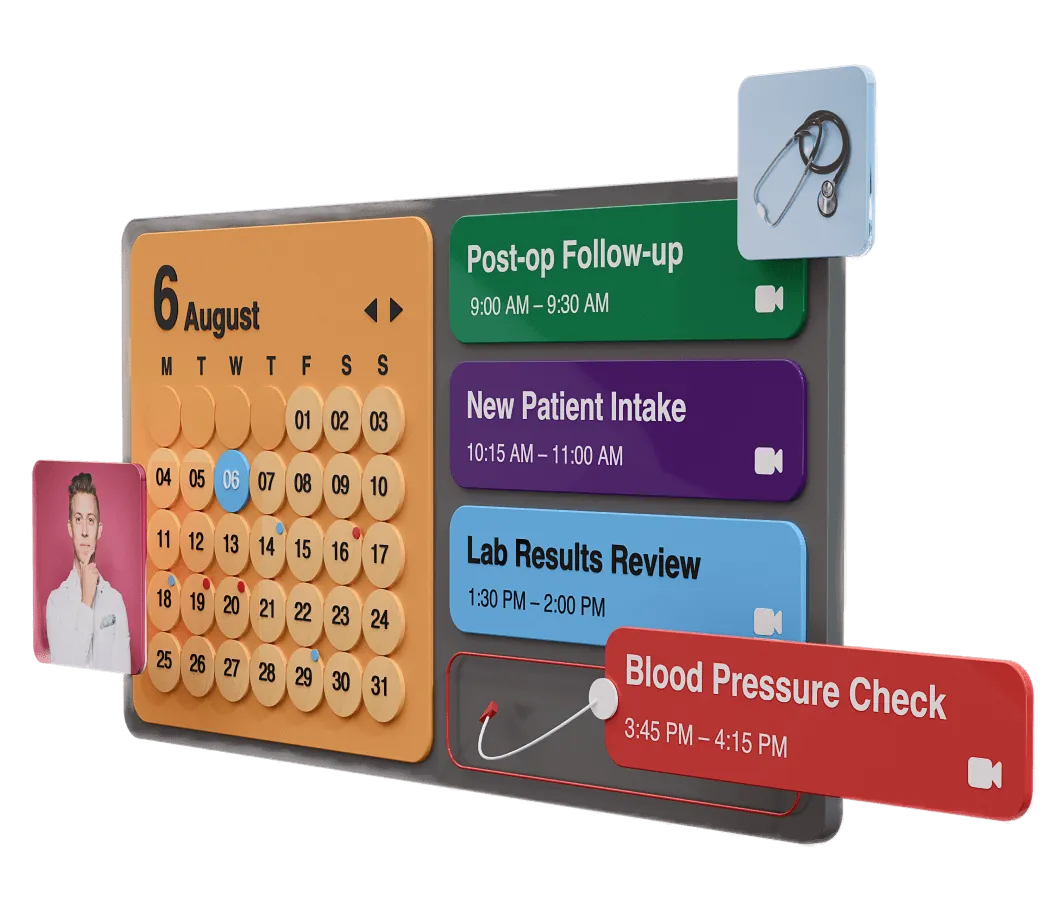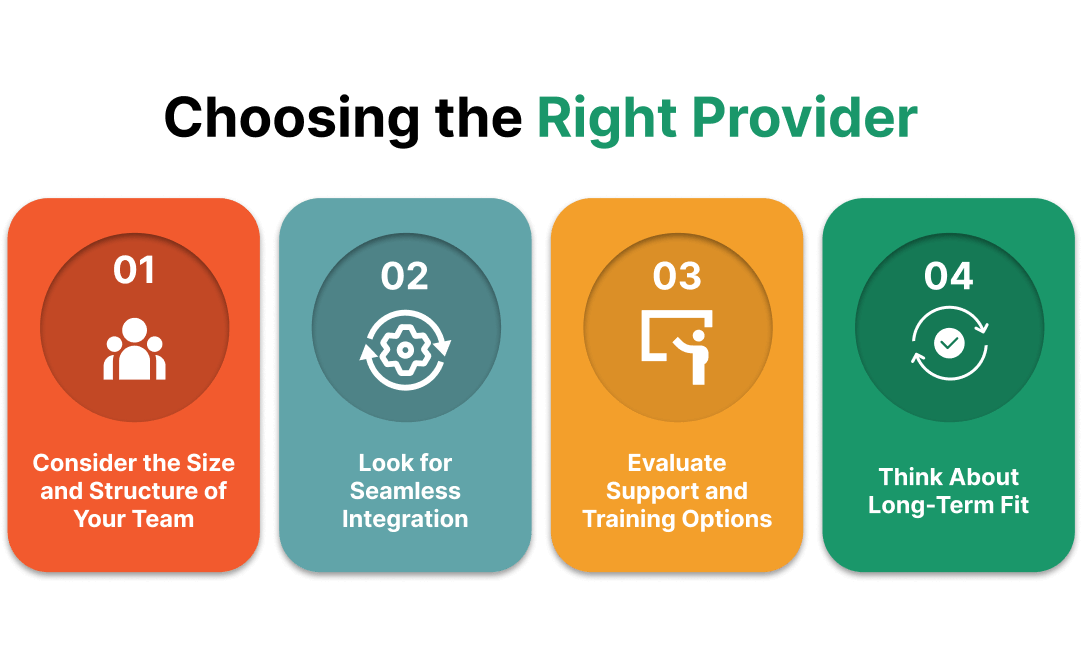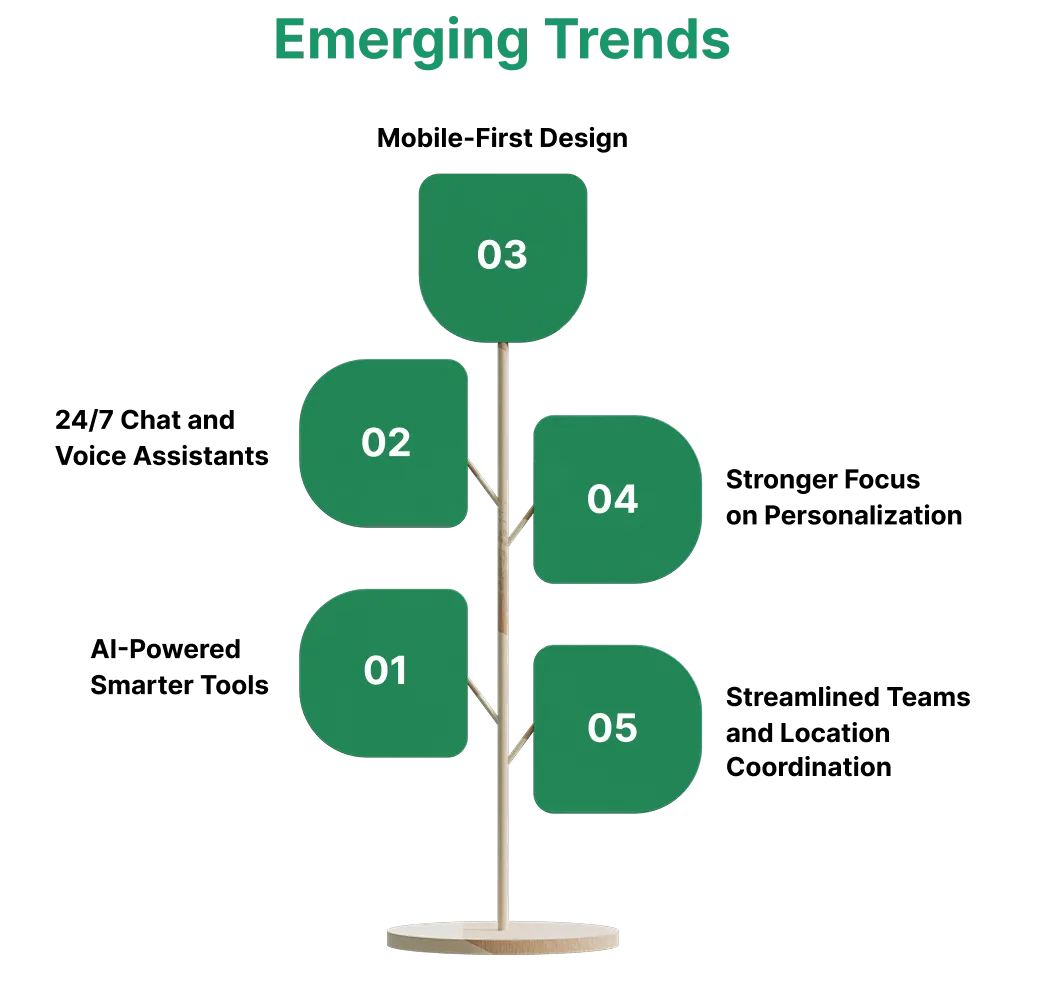Running a practice demands careful coordination, quick decision-making, and constant attention to detail with a mix of appointments, cancellations, and last-minute changes that can quickly disrupt even the most organized operation. In this fast-paced environment, medical scheduling software has become an essential tool for improving efficiency and maintaining control over daily workflows.
Managing appointments doesn’t have to feel like a constant juggling act. With the right tools in place, your team can stop wasting time on repetitive tasks and start focusing on what really matters — keeping things running smoothly and supporting the people who rely on you. These platforms take the pressure off your front desk, help cut down on delays, and make daily operations feel a lot more manageable.

In this guide, we’ve highlighted seven standout options that can genuinely make a difference. Each one brings its strengths, whether it’s smarter coordination, easier communication, or just making the day feel a little more in control. If you’ve been looking for a better way to stay organized and keep your practice moving forward, this is a great place to start.
This is a digital tool designed to support the flow of appointments in clinical environments. It allows teams to better manage availability, reduce unnecessary delays, and keep daily operations on track. Simplifying the organization of appointments fosters a more structured and predictable environment for all parties involved.
During the early stages of the pandemic, medical visits decreased, limiting the usage and demand for medical scheduling software and affecting market growth. According to a September 2020 report from the Centers for Disease Control and Prevention (CDC), an estimated 41% of US people delayed or avoided medical care owing to COVID-19 concerns, including urgent or emergency care (12%) and regular care (32%).
Now, most platforms include features like calendar coordination, automated reminders, and real-time updates. These capabilities reduce the need for back-and-forth communication and help staff respond more efficiently to last-minute changes. Many tools also connect with other internal systems to create a more seamless experience across departments.
Used by front-desk teams, administrators, and support staff, medical scheduling software plays a key role in maintaining control and clarity in busy clinical settings. It eliminates much of the manual work tied to organizing appointments and helps ensure that time is used more effectively throughout the day.

Choosing the right appointment medical scheduling software to manage your appointment process can have a major impact on how smoothly your practice operates every day. With many options available, it’s important to understand what each offers and how it fits your unique needs. Below are seven trusted options known for their reliability, features, and ability to improve efficiency.
CleverDev Software delivers fully tailored appointment platforms designed to reflect your unique workflows and internal processes. Instead of forcing your team to adjust to a rigid structure, CleverDev Software shapes its custom-built systems around your goals, whether you manage a small local practice or a multi-location network.
Features can include smart reminders, mobile access, calendar syncing, and smooth EMR integration technologies with your billing and internal records. Security and regulatory compliance are embedded into every step, ensuring long-term scalability and peace of mind. CleverDev’s hands-on development process allows your team to stay involved, so the final result feels intuitive, effective, and genuinely supportive of your daily operations.
Mend is built around the idea of stronger engagement through seamless communication. It combines visit coordination with virtual meeting capabilities, offering self-service booking, secure video calls, and intelligent reminders — all accessible across desktop and mobile. What makes Mend stand out is its focus on minimizing missed appointments through predictive no-show analytics and automated rescheduling workflows.
The online medical scheduling software helps reduce manual phone time and supports smooth transitions between in-person and remote visits. For teams looking to modernize without a heavy learning curve, Mend offers an easy way to elevate both internal coordination and client-facing interactions.
Luma Health offers a powerful suite of tools designed to help improve medical practice management in real time. The appointment scheduling software for medical offices is built to support fast-moving environments where cancellations, last-minute openings, and long waitlists are the norm.
With smart outreach features, Luma can fill open time slots automatically by alerting the right people at the right moment. Its dashboards and alerts give staff the visibility they need to act quickly and keep daily operations on track. Practices that need to coordinate across multiple departments or keep a tight handle on visit flow will find Luma especially valuable.
OhMD is more than an appointment tool — it’s a complete scheduling software for medical equipment businesses focused on creating a seamless connection between care teams and those they serve. In addition to visit coordination, it offers real-time, HIPAA-compliant messaging, bulk outreach, reminders, and virtual visits.
This makes it a strong choice for practices looking to replace long phone queues and improve responsiveness. OhMD’s interface is simple and accessible, which means your team can adopt it quickly and start benefiting from stronger communication right away. It’s especially helpful for practices that want to combine coordination and engagement into one clear process.
NexHealth puts a modern, user-friendly experience at the center of its medical equipment scheduling software. It includes self-booking widgets for websites, smart reminders via text or email, and real-time calendar syncing that updates across all connected systems.
One of its standout features is instant rescheduling, which gives users more flexibility while helping fill gaps without staff intervention. NexHealth is a good match for busy offices that want to offer a digital-first experience without adding complexity for their team. With its sleek design and robust automation features, it helps you run a tighter, more responsive operation.
Relatient focuses on efficiency at scale. It supports large-volume operations through automated messaging, flexible visit workflows, and real-time availability management. The medical practice scheduling software also includes self-check-in, digital intake, and post-visit feedback tools, creating a full-circle experience for both staff and visitors.
Its rule-based engine can suggest alternative openings, send follow-up reminders, or help manage group visits with minimal oversight. For organizations with multiple locations or departments, Relatient offers the structure and flexibility needed to stay organized without overwhelming the front office.
Designed with wellness professionals in mind, Healthie blends modern design with practical tools for booking, video sessions, and secure document sharing. It supports both one-on-one and group visits and includes digital intake, progress tracking, and real-time messaging features.
Healthie is particularly useful for nutritionists, behavioral therapists, and wellness clinics that offer recurring services and value long-term engagement. The medical billing and scheduling software's clean layout and mobile responsiveness make it easy to use for both staff and visitors, reducing friction and helping providers maintain meaningful, ongoing connections.
IntakeQ offers an elegant blend of visit coordination and customizable forms, allowing you to control every part of the booking and pre-visit experience. Healthcare technology solutions support real-time availability, secure messaging, digital signatures, and payment collection — all while giving you full freedom over intake content.
For solo practitioners or niche clinics that rely on detailed consent forms, client histories, or tailored workflows, IntakeQ provides unmatched flexibility. Its automation features also help reduce repetitive admin work, allowing your team to focus more on delivering care and less on chasing paperwork.
Kareo is built with independent practices in mind, offering a straightforward way to handle bookings, billing, and communications all in one place. You’ll benefit from automated reminders that help reduce missed visits, easy-to-use portals for self-service, and simple calendar controls.
This medical billing scheduling software is praised for being user-friendly, making it a great choice if your team prefers a straightforward experience. However, if you need advanced customization, Kareo’s capabilities might feel somewhat limited.
AdvancedMD provides comprehensive medical clinic scheduling software designed for growing practices and medical groups. It integrates appointment management with clinical record access, giving you a seamless experience.
Features like waitlist handling, recurring bookings, and drag-and-drop calendar controls offer great flexibility. It’s well-suited for teams planning to expand or needing highly customizable tools. The investment is higher, which may be a consideration for smaller operations.
SimplePractice is popular among mental health professionals and solo providers because of its clean interface and affordability. It includes compliant telehealth capabilities, mobile access, and an easy-to-navigate portal that lets visitors manage their bookings.
This reduces the workload on your staff. While it’s highly user-friendly, it may lack some advanced features needed for larger or more complex organizations.
DrChrono combines booking functions with a powerful clinical record system, making it a strong choice if you want integrated tools. Features include real-time appointment handling, insurance verification, and telehealth support.
This medical staff scheduling software streamlines workflows by connecting bookings directly with clinical documentation and billing. Implementing this software can be challenging and time-consuming, particularly for teams unfamiliar with digital tools.
Acuity Scheduling stands out for its flexibility and customization options. It offers customizable intake forms, support for multiple time zones, and branded booking pages, allowing you to tailor the experience to your visitors.
While it excels in self-service capabilities, it does not offer deep integration with clinical systems, making it suitable for practices focused on convenience without complex backend needs.
Zocdoc doubles as a booking platform and a public directory, helping you increase your practice’s visibility. If attracting new visitors and filling open slots is a priority, Zocdoc’s verified reviews and insurance filters can be very helpful.
The online booking system makes it easy for visitors to find and connect with your practice. However, the platform can be costly and competitive, especially in busy areas, so it’s important to consider if the investment aligns with your growth goals.
NextGen Healthcare is designed for larger practices and networks requiring enterprise-grade capabilities. It combines booking management with clinical records, resource allocation, and advanced reporting, helping you coordinate complex operations across multiple sites.
This platform offers powerful tools and scalability but involves a more complex setup and higher costs, making it best suited for organizations with significant infrastructure and budget.

Introducing innovations into your practice can transform the way your team manages appointments and daily operations. You’ll quickly notice improvements that not only save time but also create a more efficient and pleasant working environment.
The worldwide medical scheduling software market is expected to be worth USD 318.5 million in 2023 and USD 749.9 million by 2030, with a CAGR of 13% between 2024 and 2030. The growing need for software to efficiently manage and improve workflow, as well as the increasing use of patient-centric methods, are important drivers of market expansion.
As you evaluate new scheduling tools, it’s also worth recognizing how rapidly evolving technologies — especially AI-driven solutions — are reshaping what healthcare practices can expect in terms of investment. With AI now embedded in most modern software systems, many features that once increased custom software development cost are becoming standard, allowing practices to access more powerful automation without disproportionate price jumps. This shift means clinics can adopt smarter scheduling platforms that handle complex workflows, reduce administrative strain, and seamlessly scale with patient volume—all while keeping budgets predictable and aligned with long-term growth goals.
Let’s explore how these tools can support your goals and make your day-to-day easier.
When repetitive tasks like confirming appointments or handling rescheduling are handled automatically, your staff can shift their focus to work that truly requires their attention. This might include helping visitors with more complex needs, improving internal workflows, or simply keeping the front office running smoothly.
By removing the constant pressure of juggling calendars manually, your team gains time, clarity, and the opportunity to do their jobs more effectively. Over time, this leads to stronger performance and greater job satisfaction across roles.
A more structured and reliable appointment process directly reduces delays during the day. When each time slot is clearly managed and last-minute changes are handled quickly, you create a smoother pace that keeps everything moving.
Visitors spend less time waiting, staff experience fewer backlogs, and your entire day becomes more predictable. The result is a better flow and a more positive experience at every touchpoint.
For practices that operate across different sites, departments, or providers, coordinating appointments can be a logistical challenge. These tools give you a single view of availability, helping your team manage resources without confusion or conflict.
You’ll avoid situations where staff are double-booked or time is underutilized. With real-time updates and shared access, teams can work together more effectively across locations, making transitions and communication more seamless.
The process of booking a visit is often the first real interaction someone has with your organization. When that experience is smooth, intuitive, and timely, it leaves a strong impression of professionalism and care.
A well-managed appointment system shows that your practice values time, respects the individual, and is equipped to meet expectations. This builds trust from the start and increases the chances of long-term engagement.
Cancellations, no-shows, and urgent changes can easily throw off the flow of the day. With the right EHR software development in place, your team can respond quickly by adjusting availability, offering open times to others, or reassigning resources.
Instead of scrambling to fill gaps or manage last-minute changes by hand, you’ll have systems that allow you to adapt quickly and stay in control. This agility helps keep your day productive, even when plans shift unexpectedly.
One of the biggest challenges you face is no-shows and last-minute cancellations that disrupt your day and waste valuable time. With different types of healthcare software, automated reminders, and confirmation messages sent directly to individuals, you reduce the chances of these gaps appearing in your calendar.
This means your available time slots get filled more reliably, leading to steadier workflows and better resource utilization. In practical terms, you’ll find fewer interruptions and a more consistent flow, which ultimately helps maintain a balanced and productive schedule.
If your team spends countless hours on the phone handling appointment changes, it can quickly lead to fatigue and inefficiency. By automating routine coordination tasks such as updates, cancellations, and reminders, medical scheduling solutions significantly cut down on manual work.
This gives your staff the freedom to concentrate on more complex and meaningful tasks, improving job satisfaction and reducing stress. You’ll also notice fewer errors and missed communications, allowing your office to operate more smoothly.
Effective teamwork relies on everyone having access to the same up-to-date information. With a centralized custom scheduling for elective medical centers that provides real-time updates on appointments, you eliminate the confusion that often arises with multiple people managing the calendar.
This clarity means your receptionists, medical assistants, and other team members can coordinate effortlessly, avoid double bookings, and respond swiftly to changes. You’ll create a more collaborative environment where everyone knows exactly what’s happening and can act accordingly.
When urgent requests or unexpected changes occur, having immediate insight into your current schedule is invaluable. Scheduling software for medical offices equips you and your team with real-time visibility, enabling quick decisions that keep operations flowing without delay.
Whether it’s accommodating a last-minute request or adjusting for a cancellation, you’ll be able to react promptly and maintain control over your day. This responsiveness improves overall efficiency and helps you provide timely attention to those who need it most.
Creating consistent and reliable EHR software to manage sets the foundation for a well-organized practice. You’ll notice that having structured processes in place reduces uncertainty and stress for everyone involved.
Staff will know what to expect throughout the day, and visitors will appreciate the smoother experience. This predictability fosters a professional atmosphere where daily routines run smoothly, leading to higher satisfaction and better outcomes.

Finding the right tool to manage appointments isn’t just about features, it’s about choosing something that truly fits the way your team works. The ideal medical office scheduling software should align with your daily operations, adapt to your pace, and support your long-term goals. With so many options on the market, making a well-informed choice starts with knowing what to look for.
What works for a solo practitioner may not suit a large, multi-location practice. Some platforms are built for simplicity, offering just the core essentials, while others provide more advanced functions that support complex workflows and larger teams. Think about how many people will use the system, how much coordination is required, and how your team prefers to interact with digital tools.
Managing appointments is rarely an isolated task. It often ties into recordkeeping, billing, internal communication, and reporting. Choosing medical scheduling software that integrates well with the tools you already rely on will help reduce friction and make your team’s job easier. The more connected your systems are, the smoother your operation will be.
No matter how intuitive a platform may seem, questions will arise, especially during setup. Strong onboarding support, accessible training materials, and responsive customer service can make a significant difference in how quickly your team feels comfortable. Look for providers who offer hands-on assistance and ongoing resources to help you get the most out of the platform.
As your practice evolves, your needs will change. The tool you choose today should be able to grow with you. Flexibility, frequent updates, and a track record of continuous improvement are signs that a platform is built to last. It’s not just about solving today’s problems — it’s about investing in something that can support your future.

The way practices handle appointments is changing rapidly. New tools and features are not only simplifying coordination but also helping teams respond faster, stay better connected, and offer a more modern experience. If you're thinking ahead, here are some key trends shaping the future of appointment management and why they matter to your organization.
Artificial intelligence is making its way into everyday operations, offering more than just automation. These tools can now suggest ideal time slots, flag gaps in availability, and even adjust timelines based on historical activity. This leads to smoother workflows, fewer disruptions, and a more proactive way to manage your calendar.
Convenience is no longer a bonus, it’s expected. Chatbots and voice-enabled tools are now being used to handle bookings around the clock. This gives people more flexibility to interact on their time, without relying on office hours or staff availability. It also helps reduce the volume of manual tasks for your team.
As more users rely on phones and tablets to take care of their needs, mobile-first scheduling software for medical is becoming the new standard. Interfaces that work smoothly on any device improve engagement and accessibility. For teams, this also means having the ability to check updates, adjust availability, or communicate on the go, without being tied to a desk.
People expect a more tailored experience, and modern platforms are delivering. Custom notifications, branded messaging, and visitor-specific preferences are now commonly supported. These small touches build trust and create a more seamless experience, which can lead to stronger long-term engagement.
For organizations with multiple departments or offices, coordination is key. New tools are making it easier to view availability across teams, assign responsibilities, and shift bookings in real time. This leads to fewer bottlenecks and gives you better visibility into how your resources are being used.

A multi-specialty clinic in the Midwest, managing over 150 daily visits across three departments, struggled with long wait times, double bookings, and frequent no-shows. Administrative staff were overwhelmed trying to coordinate bookings through phone calls and manual spreadsheets, often leading to missed information and frustrated visitors.
To improve the process, the clinic adopted digital medical software for scheduling with features like automated reminders, real-time availability updates, and integrated calendars for each provider. Within three months, no-show rates dropped by 40%, and front-desk call volume was reduced by nearly half.
Staff reported having more time to focus on direct communication and in-person service, while visitors appreciated the option to confirm or adjust their times online without needing to call. The clinic also began tracking appointment flow trends to optimize provider availability based on demand patterns throughout the week.
Thanks to these improvements, overall visitor satisfaction increased, operations ran more smoothly, and the administrative team was able to handle a growing volume without needing to hire additional support.
Managing appointments plays a much larger role in your organization’s performance than it may seem at first glance. It directly influences how efficiently your team operates, how smoothly each day unfolds, and how well your services are delivered. With the right medical appointment scheduling software in place, your entire workflow becomes more focused, consistent, and easier to manage.
The platforms introduced in this guide offer a wide range of features designed to support different priorities and team structures. By identifying what matters most to your practice, such as ease of use, flexibility, or the ability to connect with other systems, you can select an option that supports both your current operations and future growth.
Adopting a modern tool is more than a convenience. It helps create a more structured and dependable environment where your team can work with greater confidence and less interruption. Every improvement you make in this area has the potential to benefit your entire organization.
Now is the time to explore these platforms more closely and choose the one that aligns with your direction. A more streamlined and effective approach is well within reach.


Our newsletter is packed with valuable insights, exclusive offers, and helpful resources that can help you grow your business and achieve your goals.